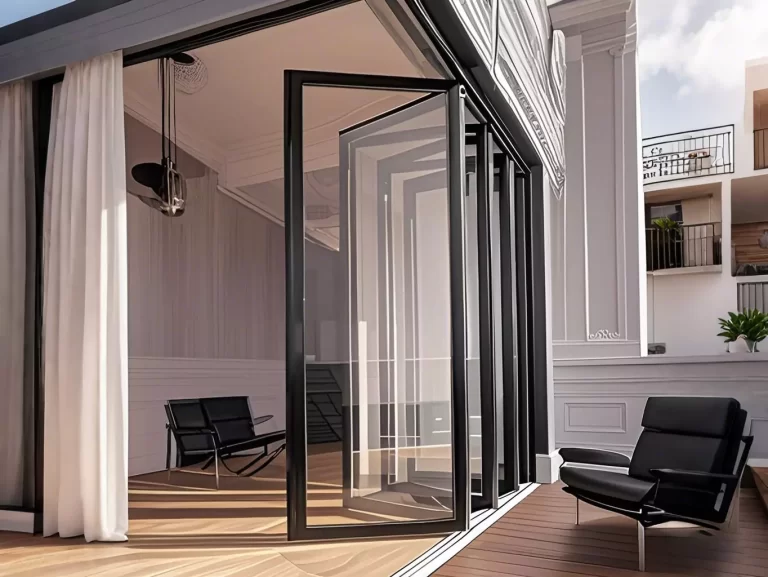Aluminium windows are widely recognized for his or her elegance, sturdiness, and strength performance, making them a perfect preference for both residential and business homes. however have you ever ever puzzled about the manner in the back of creating those excessive-overall performance home windows? From initial design to final set up, aluminium home windows go through a meticulous production technique. on this guide, we’ll walk you via each degree of manufacturing, losing mild at the craftsmanship and generation involved.
Step 1: design & custom dimension
The creation of aluminium home windows starts offevolved with a detailed session among the producer and the customer. in the course of this initial meeting, key components together with the style, length, and capability of the window or door are mentioned. specific measurements are taken to make sure the final product suits seamlessly into the meant area. The design phase also consists of decisions concerning colour, form, glazing options, and further features. This collaborative method ensures that the very last layout suits the purchaser’s imaginative and prescient, whilst additionally thinking about the manufacturer’s tips for optimum overall performance.
Step 2: Aluminium Extrusion
once the design is finalized, the following step is extrusion — the method that shapes the aluminium profiles. Aluminium billets are heated to temperatures among 375°C and 500°C, making the steel malleable. The softened aluminium is then compelled thru a die, growing profiles such as frames, sashes, and mullions. This extrusion process lets in for the proper fabrication of custom aluminium window profiles, tailored to the particular necessities of the venture.
Step 3: Powder Coating for durability and Aesthetic enchantment
To beautify the appearance and durability of the aluminium, the profiles undergo a powder coating process. This begins with cleaning and pre-treatment to make certain right adhesion of the powder coating. The aluminium profiles are then covered in a expert powder coating booth and cured in excessive-temperature ovens. This method offers a long lasting, long-lasting finish in a huge range of colors, with first rate resistance to fading, chipping, and corrosion. The end result is an aluminium window that mixes each aesthetic attraction and sturdy safety against the elements.
Step 4: Thermal Insulation with Polyamide Thermal damage
power efficiency is a top precedence for present day aluminium windows. To reduce warmness switch, profiles are prepared with a thermal wreck made from polyamide, a fabric that complements insulation via creating a barrier among the interior and exterior metallic components. This innovative thermal ruin technology no longer most effective improves energy efficiency but also allows for the option of -tone finishes — distinctive colours at the interior and outside surfaces of the window or door.
Step 5: slicing and Punching the Profiles
With the aluminium profiles organized, the following step is to cut them to the desired lengths. every profile is exactly reduce to in shape the customer’s precise measurements for their custom window or door. Punching machines are then used to create holes, slots, and other vital openings for hardware set up, making sure that each one components fit together perfectly at some point of assembly.

Step 6: assembly and hardware set up
The assembly of aluminium windows and doorways involves becoming a member of the person components — along with the body, sashes, and mullions — the usage of unique mechanical techniques. this can consist of butt joints at proper angles or 45-diploma angles. The window or door is then geared up with seals, weatherstripping, and vital hardware, together with locks and hinges, ensuring that the very last product is both useful and secure. This level is important for making sure the tightness, durability, and standard overall performance of the window or door.
Step 7: Glass set up
With the window or door frame assembled, the subsequent step is to install the glazing. relying on the client’s alternatives, the glass can be double or triple-glazed, with options for strength-green Low-e coatings and sound insulation. The glass is securely held in area with gaskets, silicone sealants, or other materials designed to make sure a tight, climate-resistant seal.
Step 8: Rigorous first-class manipulate
every aluminium window and door undergoes a rigorous first-rate manage inspection earlier than leaving the producing facility. This ensures that every one design specifications are met and that the product performs to the very best standards. Inspections typically consciousness on regions which include the airtightness of seals, durability of the powder coating, and overall functionality of the hardware. Simulated utilization exams are frequently performed to verify overall performance below real-international conditions.

Step 9: Packaging for secure transport
To guard the completed windows and doors at some stage in transportation, they may be carefully packaged using protective materials and enclosed in custom wooden crates. This ensures that every product arrives at its destination in best situation, geared up for set up.
Why pick out Aluminium windows?
Aluminium is not only a extraordinarily durable and low-protection fabric, however it is also environmentally friendly. the producing manner requires less electricity than different materials, and aluminium is a hundred% recyclable. At LEDOW, we’re devoted to turning in pinnacle-high-quality, custom aluminium home windows and doorways that are as sustainable as they are stunning. Our dedication to precision and craftsmanship guarantees that each product is tailored to your precise needs, handing over both fashion and performance.










